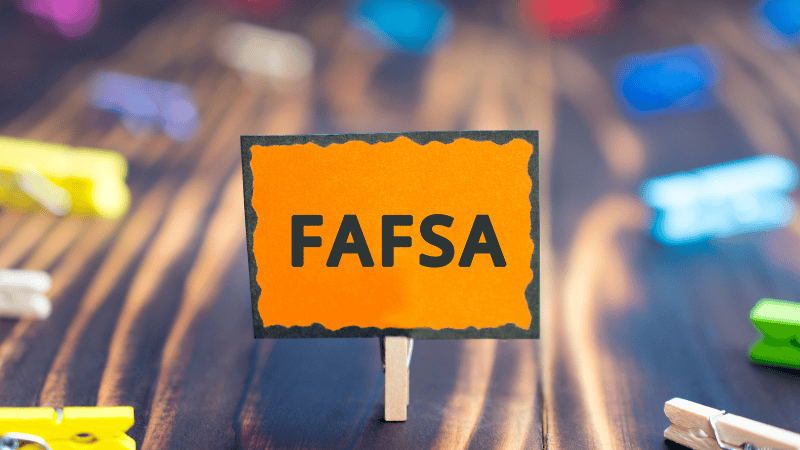Many families breathe a sigh of relief once the FAFSA is submitted. But filing is only the first step in securing financial aid for college. What comes next is just as important—and, if not handled carefully, can cost you valuable aid dollars.
This guide walks you through what to expect after you hit “submit” on your FAFSA and how to take full advantage of the aid process with support from College Benefits Research Group (CBRG).
What happens after you submit the FAFSA?
Filing the FAFSA triggers a series of behind-the-scenes steps and responsibilities:
FAFSA Confirmation and Student Aid Report (SAR)
- After submission, you’ll receive a confirmation email and later your Student Aid Report (SAR).
- The SAR summarizes the information you submitted and provides your official Expected Family Contribution (EFC).
- This report is what colleges use to calculate your financial aid eligibility.
Reviewing and Correcting Errors
- It’s critical to review your SAR for accuracy.
- Typos, incorrect Social Security Numbers, or misreported income can delay or reduce aid.
- Corrections can be made online using your FAFSA login credentials.
What Colleges Do With Your Data
- Schools listed on your FAFSA receive your information electronically.
- Each college uses its own methodology to create your aid package.
- Aid packages may vary widely even with the same EFC.
When to Expect Financial Aid Offers
- Colleges typically send aid offers after admissions decisions.
- For Early Action or Early Decision applicants, aid offers may arrive as early as December.
- Regular Decision students may receive theirs by March or April.
Additional forms you may still need to complete
Submitting the FAFSA doesn’t mean you’re done. Many colleges require additional forms or documentation.
CSS Profile for Private Schools
- Over 300 private institutions require the CSS Profile in addition to the FAFSA.
- This form dives deeper into family assets, business income, and non-custodial parent finances.
Institutional Aid Applications
- Some colleges have their own financial aid forms or scholarship applications.
- Deadlines for these can vary, so check each school’s website carefully.
The Verification Process
- Roughly 1 in 3 FAFSA filers are selected for verification.
- This process requires submitting tax transcripts, W-2s, and other documents to confirm your FAFSA details.
Required Documents
- Be prepared with:
- Prior-prior year tax returns
- W-2s and 1099s
- Bank and investment statements
- Proof of untaxed income
How CBRG Helps Families Stay Organized
- We help you track school-specific forms and deadlines.
- We assist with document gathering and submission.
- Our team ensures you don’t miss crucial steps that could delay or reduce your aid.
Understanding your Student Aid Report (SAR)
The SAR can be intimidating, but it’s key to understanding your aid status.
What is the SAR?
- A summary of the FAFSA data you submitted.
- Contains your EFC and notes any issues or flags.
How to Read It
- Double-check income, family size, and asset data.
- Look for codes or comments that indicate incomplete or conflicting info.
Common Errors
- Listing incorrect number of people in college.
- Misreporting untaxed income.
- Using the wrong year’s tax return.
Updating the FAFSA
- If your SAR contains mistakes, log in and make corrections promptly.
- Updates are processed within a few days and updated reports are issued.
CBRG Review Support
- We help families interpret SARs and determine if corrections are needed.
- We guide you in communicating with financial aid offices to clarify data.
Interpreting your financial aid offers
Once offers arrive, the comparison begins.
What to Look For in an Aid Letter
- Understand the total cost of attendance (COA).
- Identify how much of your aid is grant/scholarship vs. loan.
Comparing Offers Apples-to-Apples
- Use CBRG’s comparison tools to standardize terms across schools.
- Watch for differences in what’s covered—some letters omit fees or housing.
Grants vs. Loans vs. Work-Study
- Grants/scholarships don’t require repayment.
- Loans come with repayment terms and interest.
- Work-study provides campus job opportunities that help cover expenses.
Out-of-Pocket Cost
- Don’t be fooled by large aid numbers—focus on what you’ll actually pay.
- Include indirect costs like books, travel, and personal expenses.
How CBRG Helps Families Evaluate Offers
- We provide personalized net cost breakdowns.
- We identify gaps, funding risks, and negotiation opportunities.
When and how to appeal for more aid
If the aid offer falls short, don’t panic—there are ways to respond.
When to Appeal
- If your financial situation changed after filing.
- If you received a more generous offer from a comparable college.
Valid Reasons to Appeal
- Job loss or salary reduction.
- Medical expenses or family emergencies.
- One-time events that don’t reflect ongoing income.
Documentation You’ll Need
- Tax returns, pay stubs, termination letters.
- Medical bills or court documents.
- Competing award letters.
Structuring an Appeal Letter
- Be professional, polite, and specific.
- Explain your circumstances and provide clear evidence.
- State the additional amount of aid you’re requesting.
How CBRG Supports Appeals
- We draft and review appeal letters with families.
- We guide you through school-specific protocols and submission formats.
FAQs About Post-FAFSA Next Steps
You can submit a financial aid appeal with documentation of the change.
Yes. FAFSA must be renewed annually to continue receiving aid.
Yes, log in to correct mistakes and resubmit.
You can log back into your FAFSA and add more schools.
Through the verification process, which may require additional documentation.
How CBRG supports your full financial aid journey
We go beyond FAFSA filing. Our comprehensive services include:
- SAR review and correction guidance
- Award letter interpretation
- Appeal drafting and submission support
- Year-by-year financial aid strategy
CBRG families benefit from fewer errors, stronger aid packages, and less stress throughout the process.
“We didn’t even realize there was an appeal process until CBRG walked us through it. Thanks to their help, our daughter’s top-choice college increased her aid package.” —South Brunswick, NJ Family
“CBRG reviewed our SAR and immediately spotted an error in our income reporting. We fixed it, appealed the aid offer, and received additional grants. We’re so grateful for their guidance.” — Livingston, NJ Family
Read more stories from families like yours on our reviews page.
Filing is Step 1—Now Take Step 2
Submitting the FAFSA is just the beginning of your financial aid strategy.
To maximize your eligibility and minimize stress, it’s crucial to stay engaged with what happens next.
Schedule a consultation with CBRG to ensure your family is positioned to receive the aid you deserve.

